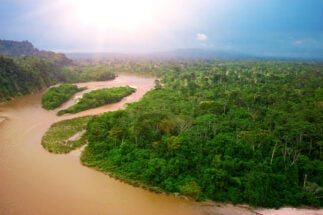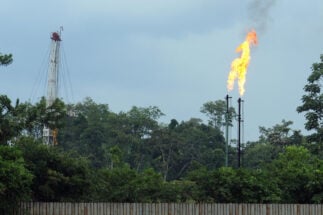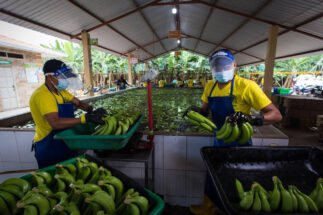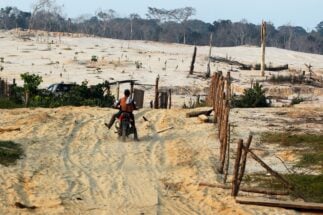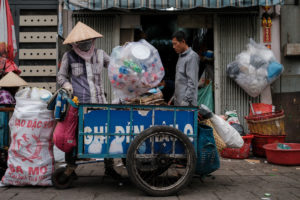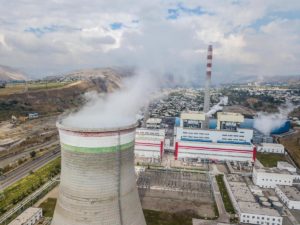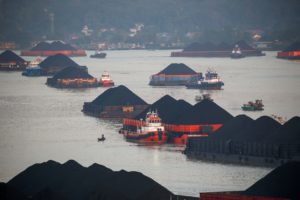Deep beneath the Yasuní National Park in the Ecuadorian Amazon lies the country’s largest crude oil reserve. More than 1.67 billion barrels of oil are believed to be here, making it the largest potential oil exploitation project in the Latin American nation’s history. But Yasuní is a protected natural area, whose unique environment covers and protects much of this precious resource. This is the case for Block 43, known as ITT – standing for the oil fields of Ishpingo, Tambococha and Tiputini – which extends over almost 2,000 hectares, 100 of which lie inside Yasuní.
The Yasuní National Park was designated as a biosphere reserve by UNESCO in 1989, and is a symbol of Ecuador. Different studies estimate that there are 150 species of amphibians, around 600 species of birds, and more than 3,000 plant species here, making it one of the most biodiverse areas on the planet. Similarly, there is an uncontacted indigenous population living in voluntary isolation in its forests, who also need to be protected.
For these reasons, since the end of the 1990s, various legal mechanisms have been promoted in order to conserve this part of the Amazon. But Ecuador has long lived with this dilemma: to preserve a unique space in the world, or to exploit its hydrocarbons and cover its million-dollar fiscal deficit? As of the end of January 2022, this was estimated by the Ministry of Finance to amount to US$3.7 billion – and so these questions burn stronger than ever.
Danger in Yasuní’s block 43
On 6 March 2020, the state-owned company Petroamazonas EP (which later merged with fellow state enterprise Petroecuador) awarded a contract to provide “specific integrated services” for the drilling and completion of 24 new wells at Block 43, in the Tambococha field, Orellana province.
The US$148 million contract was awarded to the Chinese company Chuanqing Drilling Engineering Company Limited. The new wells would increase production by around 7,500 barrels of oil per day, Petroecuador said at the time.
As part of the work associated with the new wells, on February 27 construction began to connect the section of the Tambococha B platform to the Ishpingo A platform, both located in Block 43.
In March that year, satellite images from the Monitoring the Andean Amazon Project (MAAP), detected the construction of a road leading from the Tambococha B platform to the Tambococha C, Ishpingo A and Ishpingo B platforms, which have been approved for exploitation and could put the conservation of the Yasuní park at risk.
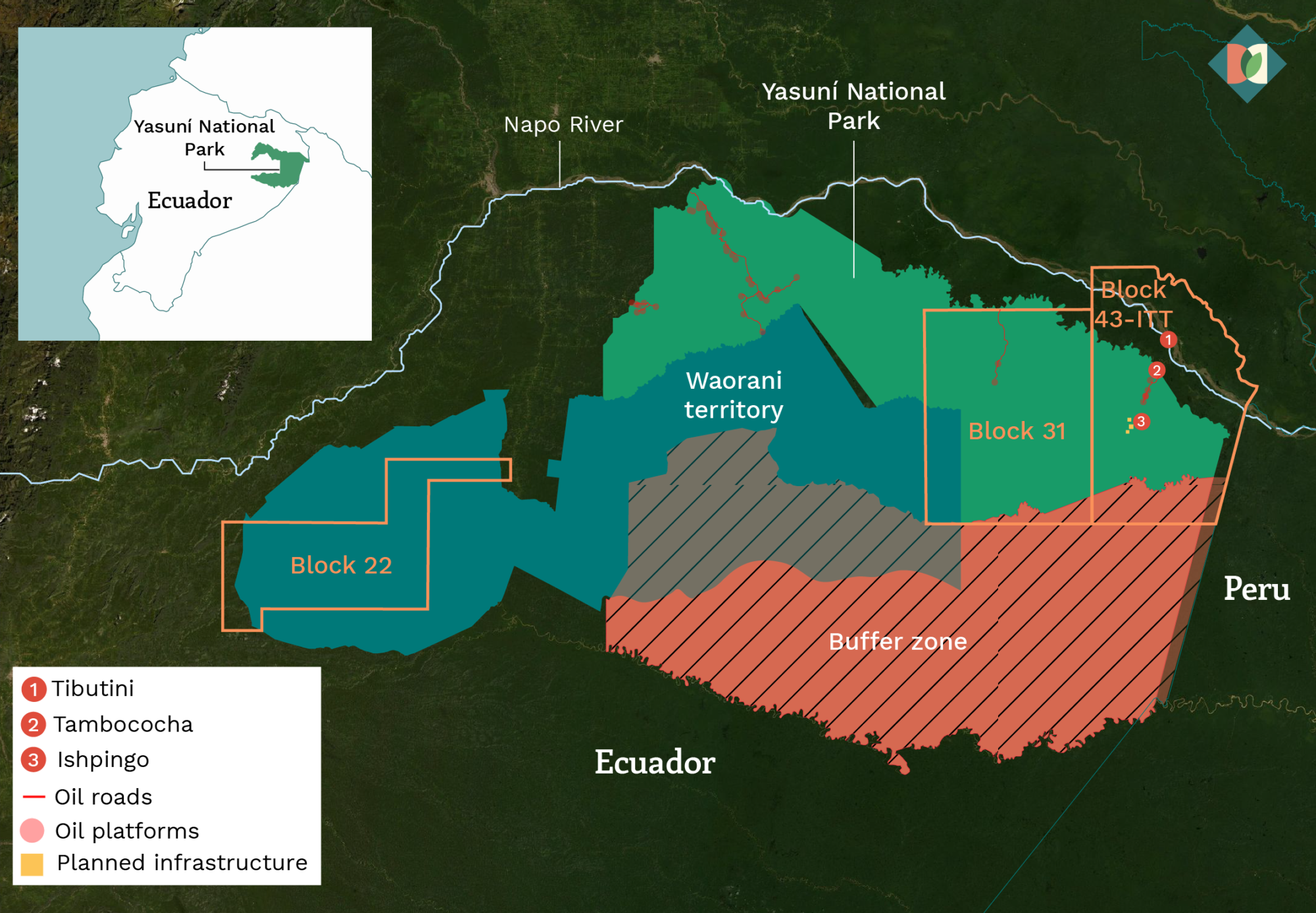
Almost two years later, on 25 January 2022, MAAP again warned of the expansion of the road within a few hundred metres of the protected “Intangible Zone” of the Tagaeri and Taromenane indigenous peoples. “Based on updated satellite images, we show the most recent construction within the ITT Block, the Ishpingo B platform. This platform is located only 300 metres from the Intangible Zone buffer zone. We also warn of future construction that could enter the buffer zone and reach the boundary of the Intangible Zone itself,” says a report published on the MAAP website.
Petroecuador responds
After two months of requests for information on works within Yasuní, Petroecuador responded in writing to Diálogo Chino. The state oil company insists that they comply with environmental guidelines.
“All the accesses [paths and facilities] built in Block 43 are part of the authorisations granted by the Ministry of Environment. Their operation is legally authorised. Prior to the start of construction activities on the access [works], a detailed environmental topography is carried out. A multidisciplinary team (biologists, environmentalists, builders, technicians) participated to identify biologically sensitive areas, such as mineral licks, feeding and drinking troughs, nesting areas, ecological corridors and important trees. Once identified, they are conserved,” a translation of the document reads.
Unfortunately, whatever happens, the environmental damage has already been done
Petroecuador added that their aim is to “safeguard the balance of the natural ecosystem, reducing the effects of ecological fragmentation and prioritising the normal development of arboreal and terrestrial species”. It also pointed out that there is “monitoring of the physical conditions of bodies of water, air quality, sound levels and atmospheric emissions”.
Regarding the contract with the Chinese partner, Petroecuador said: “the tender was carried out through a bidding process with previously established terms and conditions, reviewed and approved by the competent authorities. The company Chuanquing Drilling Engineering Company Limited was awarded the contract once it exceeded the technical requirements set out in the bidding conditions and presented a lower economic offer in relation to the offer presented by the company Sinopec [another Chinese company; state-owned]. This was more beneficial.”
President Lasso favours extraction in Yasuní
Oil exploration and exploitation is an important issue for the government of Ecuador, which needs to reschedule the nearly US$5 billion of debt it has with China. In addition, part of its oil output, which has not yet been extracted, has been sold and guaranteed to the Asian country.
Therefore, in July 2021 and after barely two months in government, Guillermo Lasso issued a new hydrocarbons policy – Executive Decree 95 – to increase oil production.
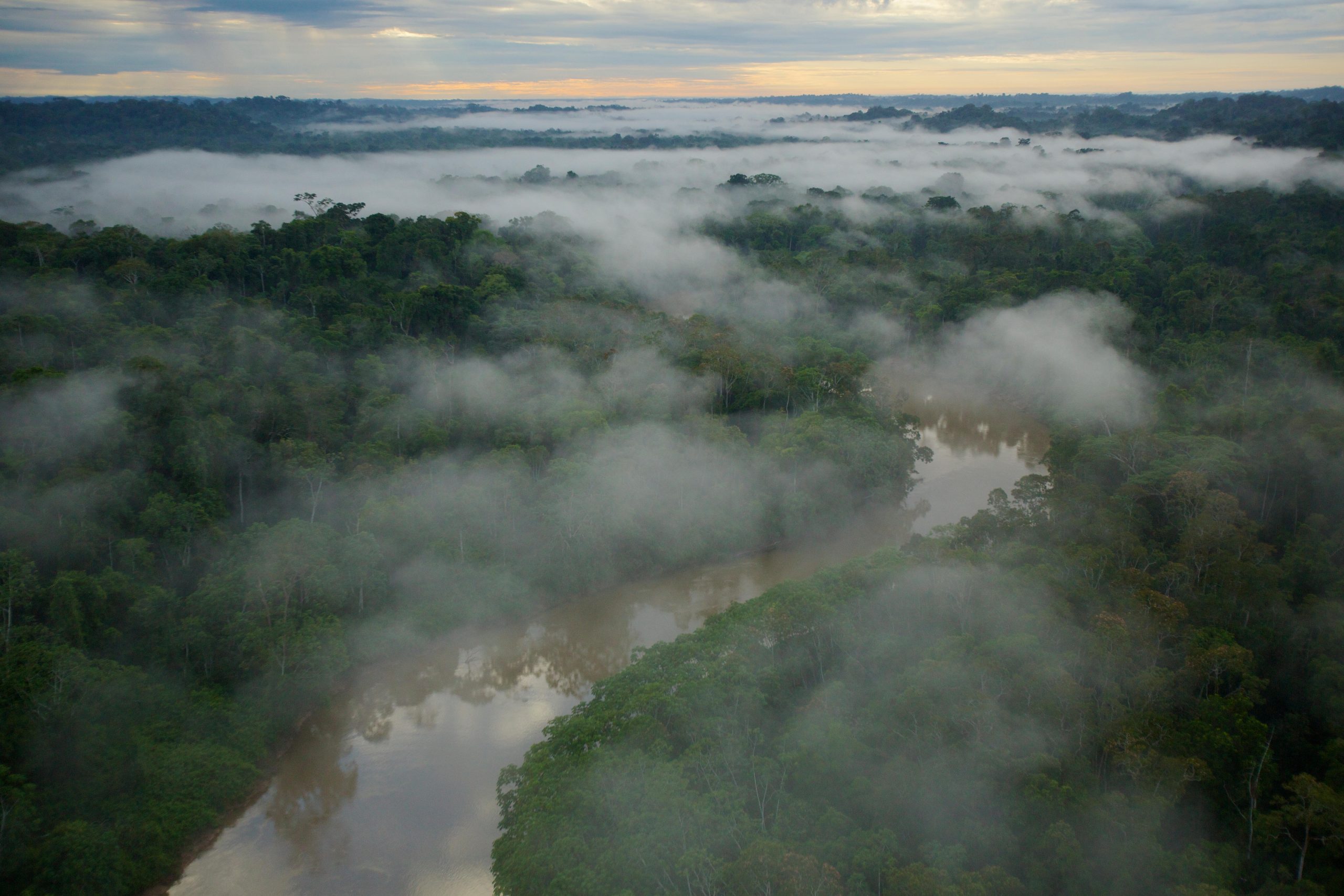
In this vein, in the last week of February 2022, the country’s energy minister, Juan Carlos Bermeo, reported that the government had awarded the first contract for drilling wells in the Ishpingo oil field, near Yasuní, to China National Petroleum Corp (CNPC).
“We have a lot of hope for the Ishpingo field,” the energy minister said of the CNPC contract.
The first drilling campaign in the sensitive area will involve 40 wells until at least the end of 2023.
Ishpingo is the latest section of the ITT oil field in Ecuador’s Amazon region to see drilling permitted, after Tambococha and Tiputini. “It is expected to produce heavy oil, which will be added to the national production of Napo crude [a type of oil produced in the country],” explained Bermeo with much excitement – despite the constant complaints about the work carried out at this field.
Lawsuits against the state
The Yasuní National Park covers almost 10,000 km2 – an area larger than Santiago de Chile, Buenos Aires city, Mexico City, Lima, Sao Paulo, Bogotá, La Paz, Quito, and Caracas combined – and the pressures to exploit its subsoil are growing.
Over several decades, national and foreign environmental organisations have made various demands to prevent the advance of oil exploitation in the Amazon rainforest, especially due to the continuous legal reforms that open the way for crude oil extraction.
2016
The year drilling began in Yasuní after nearly a decade of failed attempts to attract international donations in exchange for keeping its oil in the ground
Yasuní became the subject of global interest in 2007 when then president Rafael Correa launched an apparently innovative plan to attract over US$3billion in donations from the international community in exchange for keeping the park’s abundant oil in the ground. However, the scheme collapsed some five years later with both sides claiming the other was insufficiently committed to the initiative. Drilling began in 2016.
The most recent call for legal protections for the park came in September 2021. The Alianza de Organizaciones por los Derechos Humanos (Alliance of Human Rights Organisations) – made up of several environmental NGOs – filed a request for precautionary measures against the Ecuadorian state to prevent the construction of roads and the entry of oil platforms into the buffer zone in Block 43 of the Yasuní ITT.
The collective Geografía Crítica, which seeks to defend territory, collective rights and nature in Ecuador, filed a legal action to prevent this exploitation. Manuel Bayón from the organisation told Diálogo Chino that they have been “promoting different precautionary measures” since 2010. It participated in the Alliance’s September 2021 claim due to “the imminent impact on indigenous peoples in voluntary isolation”, such as the Tagaeri and Taromenane.
Meanwhile, Pedro Bermeo, a member of environmental NGO Acción Ecológica, told Diálogo Chino: “We have warned about the entry of workers with machinery into the buffer zone. The boundaries were arbitrarily moved to build the road, as well as the implementation of oil installations. Unfortunately, whatever happens, the environmental damage has already been done.”
Historic ruling against exploitation
In Article 71 of Ecuador’s 2008 constitution the rights of nature, or Pacha Mama, are established “so that its existence and the maintenance and regeneration of its vital cycles, structure, functions and evolutionary processes are fully respected”. However, as has become evident, this has not stopped the actions for oil extraction.
After years of struggle, on 3 February 2022, the Constitutional Court of Ecuador prohibited the execution of oil works in the Yasuní buffer zone, where there are plans to install oil drilling rigs. In its ruling, the Constitutional Court said that “no legal norm can restrict the content of rights or constitutional guarantees” – such as those of nature.
Pedro Bermeo told Diálogo Chino that “although the damage has been done, a little justice has been done for the isolated indigenous peoples of Yasuní” – although time will tell how long the court’s ruling is respected, or remains insurmountable.
“The government of Ecuador sees only resource interests in our territory. We demand respect for our decision to keep our territories free of oil and mining. There is no real development policy for the Amazon,” said Nemonte Nenquimo, a Waorani leader and president of Conconawep, an indigenous organisation.
Despite the court’s ruling and the various efforts to protect Yasuní, work in this corner of the Amazon has not stopped. But with it, indigenous populations and numerous organisations, hope the state and related companies will eventually put conservation before exploitation.

